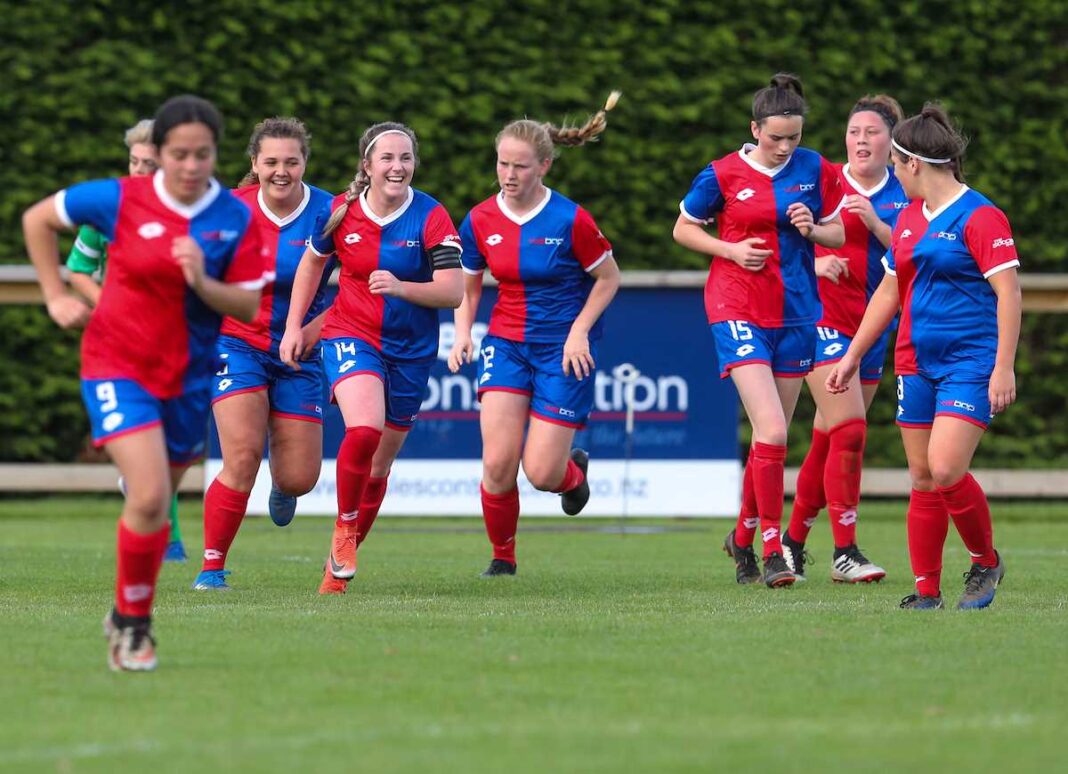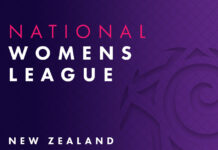

New Zealand’s National Women’s League sits near the pinnacle of the nation’s football development pathways, but its role as a competition is difficult to place.
Is the league about developing individuals players, or rather should building a squad that will win the competition be the focus?
For Waikato Bay of Plenty coach Nico Girard, the National Women’s League is about serving your federation, and it’s because the federations have such diverse needs that the perspectives on the league vary so widely.
The question for WaiBOP, Girard says, is “how [the league] fits into our community at this given moment”. To understand the role of the National Women’s League for WaiBOP, then, we have to understand that community.
Regional Challenges
As the name suggests, WaiBOP federation spans from the Waikato, with Hamilton the main centre, up along the Coromandel Peninsula and down to the reaches of the Bay of Plenty, including Tauranga and Whakatane.
As assistant coach and Football Development Officer Tracy Wrigley points out, the reality of that geography for some players is two hours of travel each way three times a week for trainings and games — which at National League level are often a plane ride away from Hamilton. The effect of this travel time is wide-ranging. It means the Federation has to work hard to ensure equal playing opportunities, at every level, are available across the region. The Women’s League side draws from across the catchment and therefore must take steps to ensure all players can play National League. Those measures create “good problems”, Girard notes.
“This year we’re going to have a training in Tauranga, and hopefully that’s a bit more attractive to players in [the Bay] area. But in doing so, I realise after that we have girls from Raglan that are interested in making the team, now how are they making the travel?” These are challenges the federation must meet as they arise.
The detailed and wide-ranging approach to talent identification that the Waikato Bay of Plenty region demands for the National Women’s League also extends to school football — which in the Waikato is separate from the Federation.
“We actually went along and watched some school tournaments last year and one of the players from the school stuff joined our National Women’s League squad”, Wrigley says.
However, the school football setup does lead to a drop-off in players at club level, and the federation losing contact with some talent. But for Wrigley that is not an insurmountable obstacle.
“Every environment has pluses and minuses”, she notes.
“It’s probably something we can learn from, or take from school football, what they’re enjoying about it”, Girard adds.
Some players choose school football because it meets their needs, Wrigley notes, and every element of a player’s life needs consideration. The focus on player welfare, enjoyment and needs runs throughout Girard and Wrigley’s perspective on the National Women’s League.
Travel time and the stresses it can create, the kind of environment a player enjoys, and what they want to achieve through football are all considerations for the National Women’s League coaches. That level of awareness demonstrates that for the WaiBOP side, the needs of the football community and the players progressing within it, are the critical underpin of the league.
“How do we support the players coming back from FFDP (Future Ferns Development Programme) into our environment? How do we support other aspirational girls who might not be in the FFDP might be looking to get there?” are the key questions for Girard.
“How to support our community is how I see the league at the moment”.
Player-Driven Commitment
As such, the group’s aims and standards for each National League season are strongly shaped by the player group themselves. Girard has the players complete questionnaires and facilitates conversations about how the players want their team to be seen by others, and by themselves.
Fundamentally, the core of the side is commitment, Wrigley says.
“It’s what they decide are the standards; what they decide as a group is the best way for them to train and perform”.
The standards of the higher level, the travel fatigue many players face, and the step-up between not only Northern League but federation and school league football, can combine to create a steep learning curve for WaiBOP players. However, helping players learn to manage these new challenges and adjust to the commitment that National Women’s League play requires is part of the function of the competition for Wrigley and Girard.
“It’s part of the purpose of the National Women’s League and differentiating it from club football”, and people come in with “a lot of different experiences and so one of the things about setting [the side] apart was giving the players a voice to self-determine a bit, […] and to understand what it meant to hear their own words and then how that affected their actions”.
An emotional moment after WaiBOP's final NWL game of the season as the players thank their No. 1 supporter Enzo Giordani who has followed them to all 12 games. He was presented with a WaiBOP shirt signed by the players. @NFF_Lights #NWL #TheFutureIsNow #WhereFootballFernsAreMade pic.twitter.com/UbBeHZGokP
— WaiBOP Football (@WaiBOPFootball) December 8, 2019
The hope in managing all these challenges inherent to WaiBOP’s region, is that the betterment of individual players can help the federation serve its community. Players from the National League side can take their experience of individual standards and self-driven commitment back to their club or school sides across the federation. If they can do that, and be their best self wherever they’re playing, that is a success for the National Women’s League season, Wrigley says.
“[If you can] have them operating at their optimal level, so that other players can see things that are different outside of their club experience […] It might be consistent standards, how do you personally drive yourself regardless of the environment? It’s kind of exposing that next layer [of players] down to opportunities, standards, environments”.
Here, again, is another core component of the WaiBOP approach to the National Women’s League: the provision of a pathway for aspirational players in their region.
After all, Girard says, “if you can’t see it, you can’t be it”.
Read more NZ NWL coverage.


